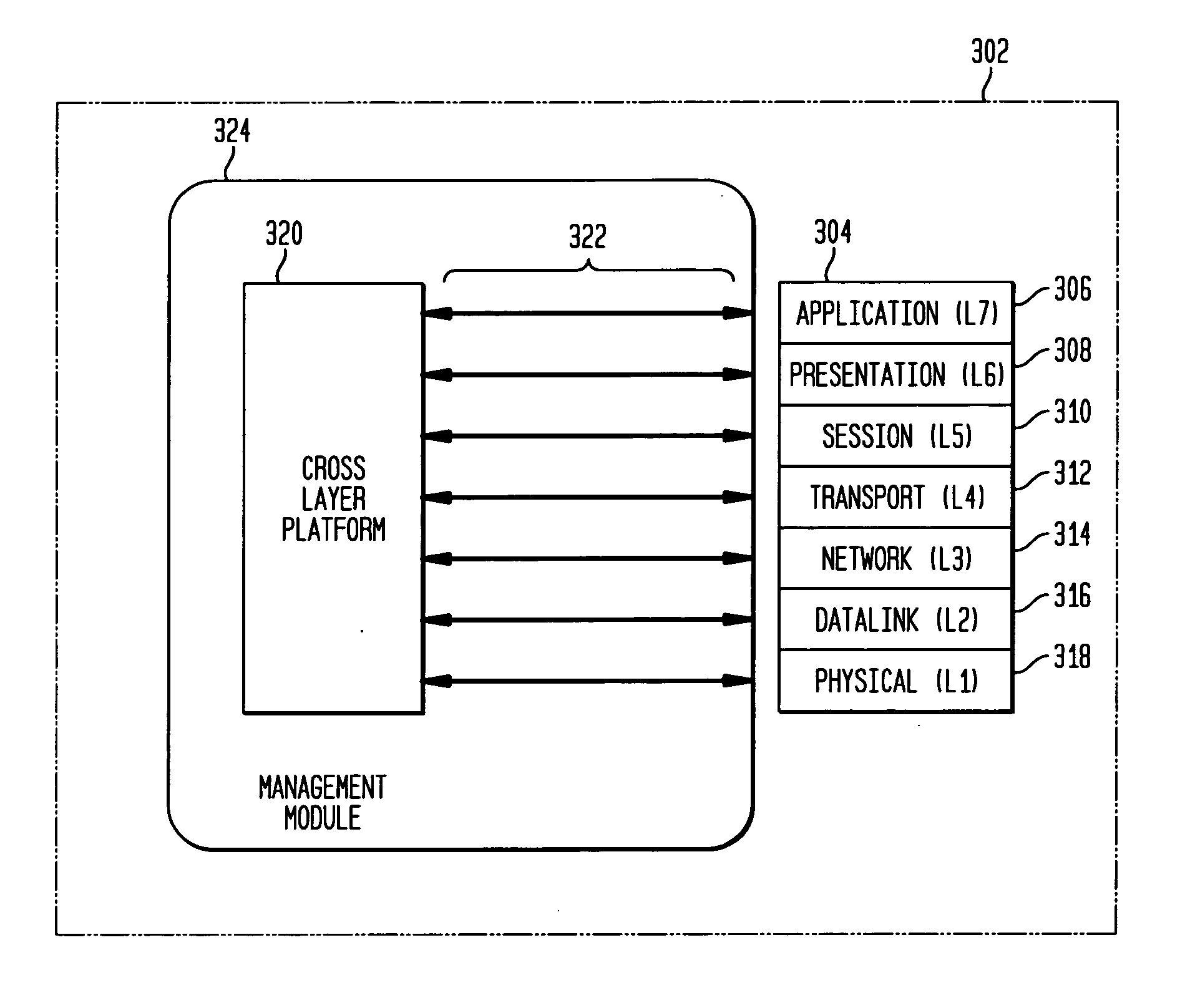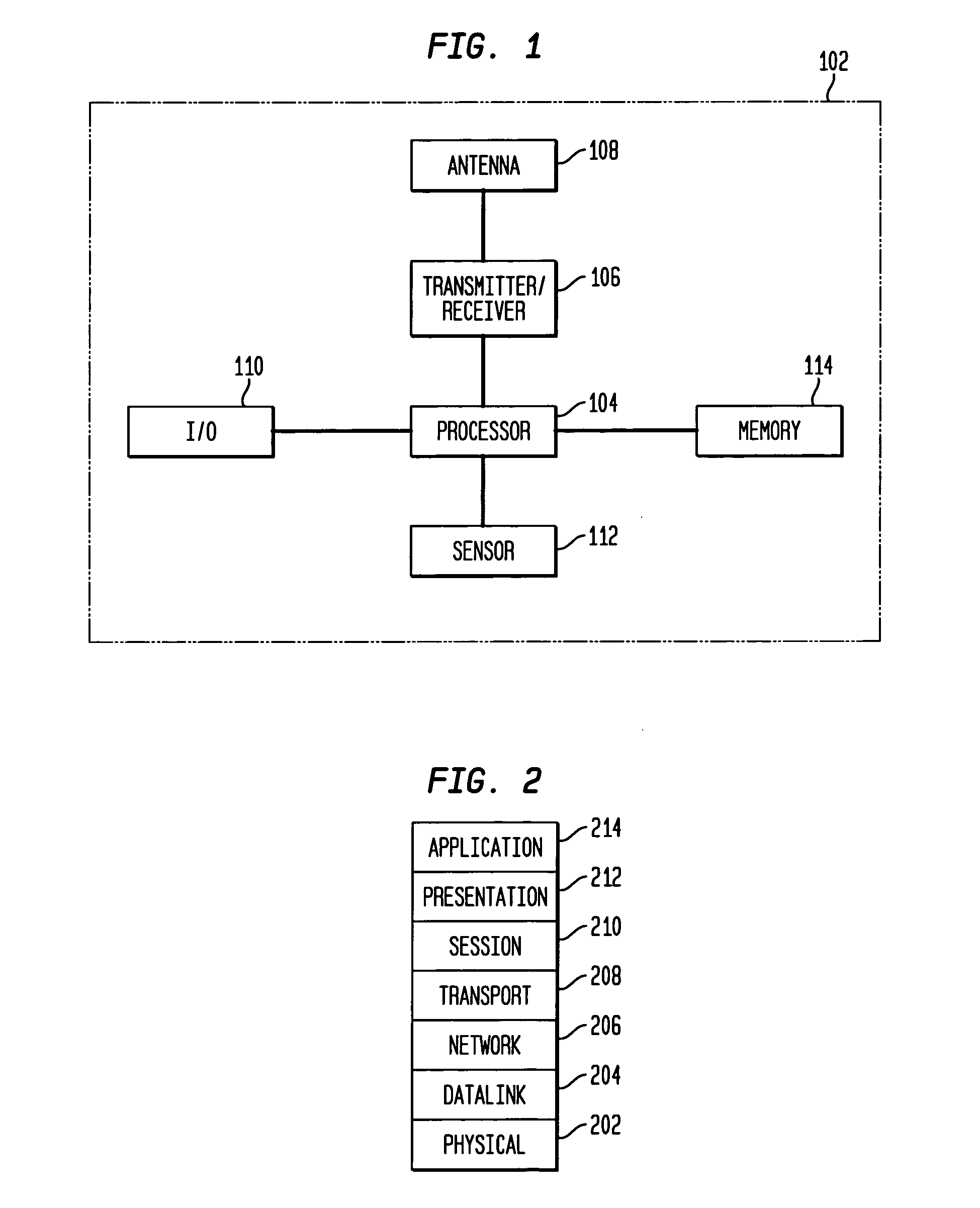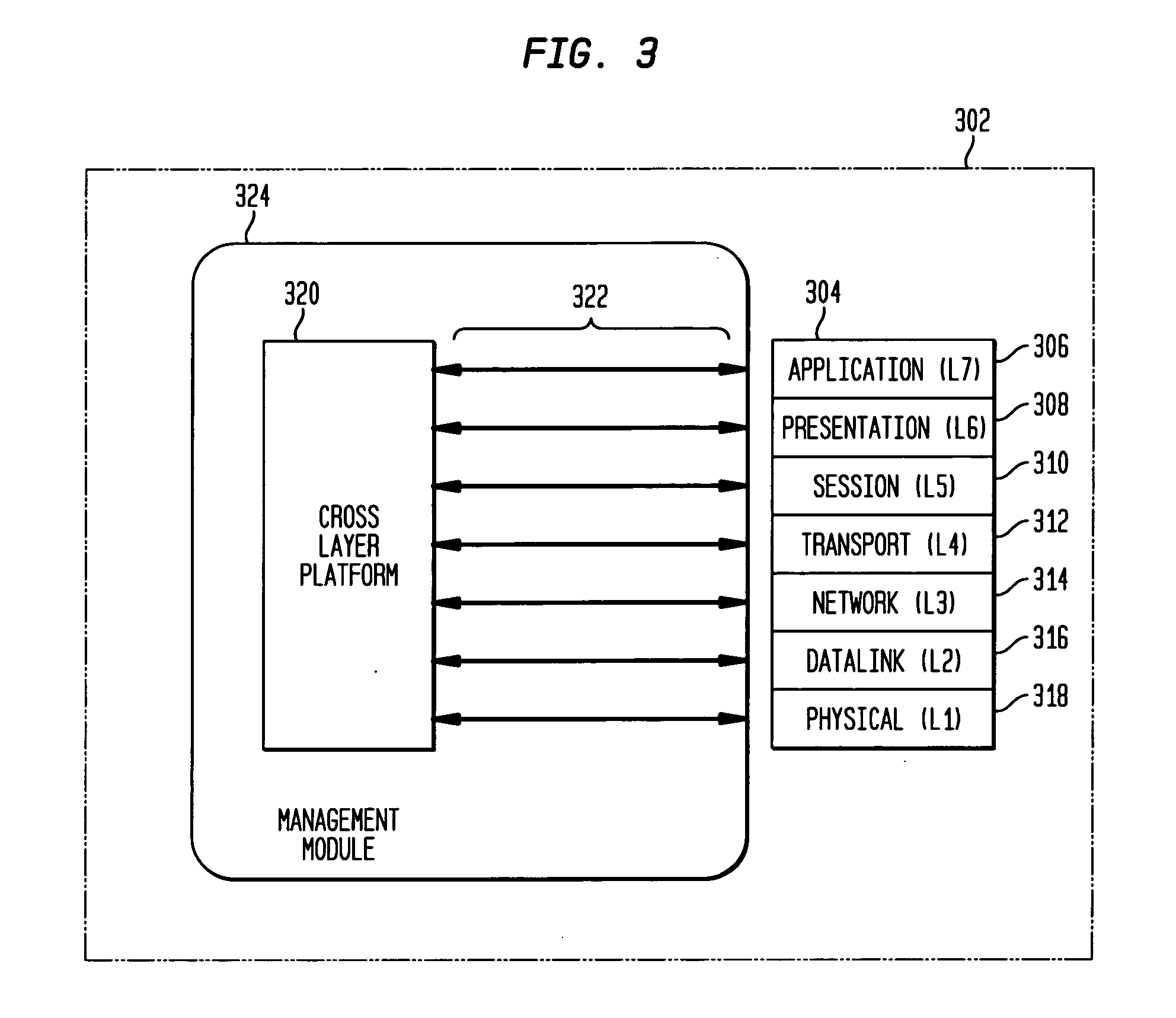Cross-layer self-healing in a wireless ad-hoc network
a wireless ad-hoc network and cross-layer technology, applied in the field of wireless networks, can solve the problems of soft failure, node and route failure, etc., and achieve the effect of improving the operation of the network node and improving the self-healing
- Summary
- Abstract
- Description
- Claims
- Application Information
AI Technical Summary
Benefits of technology
Problems solved by technology
Method used
Image
Examples
Embodiment Construction
[0021]FIG. 1 shows a high level block diagram of a mobile node 102 which may be configured to operate in a mobile ad-hoc wireless network in accordance with the principles of the present invention. Mobile node 102 contains a processor 104 which controls the overall operation of mobile node 102 by executing computer program instructions which define such operation. The computer program instructions may be stored in a memory 114. Memory 114 represents any machine readable device capable of storing computer program instructions and data. In various embodiments, memory 114 may be RAM, ROM, EPROM, magnetic disk, optical disk, or any other type of memory or storage device. Further, memory 114 as shown in FIG. 1 may represent any one or more devices, or any combination of such devices. Memory 114 is shown in FIG. 1 as a single element for ease of reference only. The operation of the mobile node 102 is controlled by processor 104 executing the stored computer program instructions. Mobile no...
PUM
 Login to View More
Login to View More Abstract
Description
Claims
Application Information
 Login to View More
Login to View More - R&D
- Intellectual Property
- Life Sciences
- Materials
- Tech Scout
- Unparalleled Data Quality
- Higher Quality Content
- 60% Fewer Hallucinations
Browse by: Latest US Patents, China's latest patents, Technical Efficacy Thesaurus, Application Domain, Technology Topic, Popular Technical Reports.
© 2025 PatSnap. All rights reserved.Legal|Privacy policy|Modern Slavery Act Transparency Statement|Sitemap|About US| Contact US: help@patsnap.com



